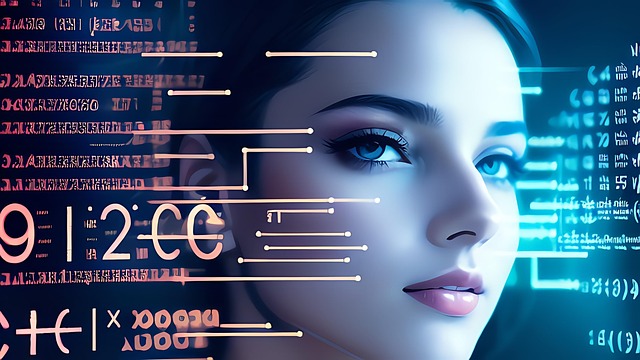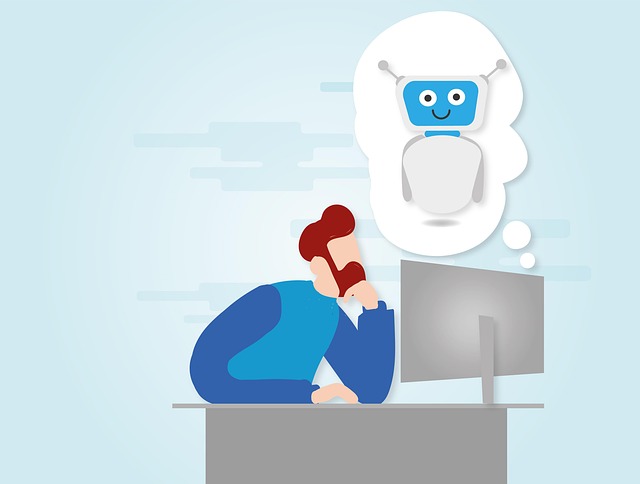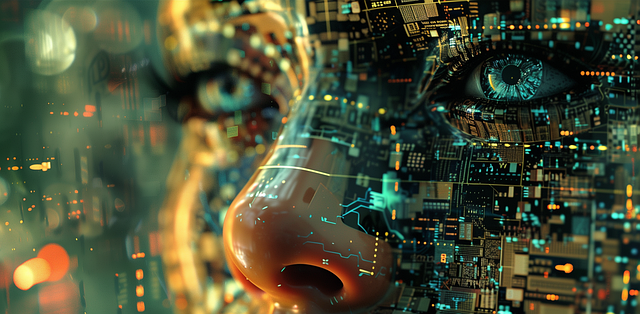AI chatbots, powered by NLP and ML, revolutionize communication with 24/7 support across diverse sectors like retail, healthcare, finance, and education. They handle queries, provide personalized recommendations, and improve efficiency in customer service. While facing challenges with language nuances and data quality, advancements in NLP and deep learning promise more adaptive, accurate, and multilingual chatbots in the future, fostering global human-machine interactions.
“Unraveling the world of AI chatbots: A comprehensive guide. In today’s digital age, Artificial Intelligence (AI) has transformed interactions with innovative solutions like chatbots. This article delves into the intricacies of this technology, exploring its core components and how it empowers various industries.
From understanding the fundamentals to uncovering future prospects, we’ll navigate the key aspects of AI chatbots. Discover how these virtual assistants utilize AI algorithms for context-aware conversations, enhancing user experiences across diverse sectors.
Get ready to explore the potential, challenges, and limitless possibilities that shape the future of chatbot development.”
- Understanding AI Chatbot Technology
- How Chatbots Use Artificial Intelligence
- Key Components of an AI Chatbot
- Applications and Benefits in Various Industries
- Challenges and Limitations to Consider
- The Future of AI Chatbot Development
Understanding AI Chatbot Technology

AI chatbot technology has revolutionized communication and customer service, transforming the way businesses interact with their audiences. Chatbots are powered by artificial intelligence algorithms that enable them to understand and process human language, generating relevant responses in real-time. These intelligent assistants learn from vast amounts of data, allowing them to evolve and adapt over time.
By leveraging natural language processing (NLP) and machine learning, AI chatbots can engage in complex conversations, answer queries, and even assist with task completion. They are designed to mimic human interactions, making them an indispensable tool for 24/7 customer support, lead generation, and information dissemination. The versatility of chatbots ensures they can be tailored to various industries and use cases, enhancing efficiency and user experiences alike.
How Chatbots Use Artificial Intelligence

Chatbots leverage artificial intelligence (AI) to understand and respond to user queries in a natural, conversational manner. At the core, these systems employ advanced natural language processing (NLP) algorithms that interpret human language, enabling them to grasp intent and context. By analyzing vast amounts of data, AI-driven chatbots can learn from previous interactions, adapt their responses accordingly, and continuously improve over time.
Moreover, AI chatbots often integrate machine learning techniques to personalize conversations. They remember user preferences, tailor responses based on individual needs, and even anticipate future queries. This level of intelligence allows chatbots to provide more relevant and engaging experiences, effectively mimicking human-like interactions in various scenarios, from customer service to personal assistants.
Key Components of an AI Chatbot

AI chatbots are powered by a combination of cutting-edge technologies, each playing a crucial role in their functionality. At the core lies Natural Language Processing (NLP), enabling machines to understand and interpret human language, both written and spoken. This allows for meaningful interactions where chatbots can comprehend user queries and generate relevant responses.
Another key component is Machine Learning (ML). ML algorithms empower chatbots to learn from vast amounts of data, continually improving their performance over time. By analyzing patterns in user interactions, chatbots become more adept at providing accurate and contextually appropriate answers. This iterative learning process ensures that the chatbot evolves with each conversation, enhancing its ability to assist users effectively.
Applications and Benefits in Various Industries

Chatbots have become indispensable tools across various industries, revolutionizing customer service with their 24/7 availability and instant responses. They are widely used in retail to handle basic customer queries, product recommendations, and order tracking, enhancing user experience while reducing operational costs. Healthcare benefits include scheduling appointments, providing initial patient assessments, and offering personalized health advice based on user inputs.
In finance, chatbots assist with account management, transaction history inquiries, and even complex tasks like investment advice and risk assessment. Education sees them facilitating student support, answering common queries, and even delivering tailored learning content. Moreover, in the customer service sector, chatbots handle a significant portion of incoming inquiries, allowing human agents to focus on more complex issues, thereby increasing overall efficiency.
Challenges and Limitations to Consider

While AI chatbots offer remarkable capabilities, it’s essential to recognize their challenges and limitations. One significant hurdle is understanding context and nuances in human language, leading to potential misinterpretations and inaccurate responses. Chatbots often struggle with ambiguity, sarcasm, or figurative language, requiring continuous training and refinement to improve contextual comprehension.
Another limitation pertains to data quality and bias. Chatbots learn from vast datasets, and if these data contain biases or inaccuracies, the chatbot may perpetuate or amplify these issues in its responses. Ensuring diverse, inclusive, and error-free training data is crucial for developing fair and reliable AI chatbots that serve users across various demographics effectively.
The Future of AI Chatbot Development

The future of AI chatbot development is brimming with potential, as advancements in natural language processing (NLP) and machine learning (ML) continue to drive innovation. Chatbots are evolving from simple rule-based systems to sophisticated, adaptive tools that can understand complex queries and engage in nuanced conversations. The integration of deep learning algorithms allows chatbots to learn from user interactions, continually improving their accuracy and context awareness.
As AI technology matures, we can expect to see even more advanced chatbot applications across various sectors, from customer service and healthcare to education and entertainment. Personalized chatbot experiences will become the norm, leveraging user data and preferences to deliver tailored responses and recommendations. Furthermore, the development of multilingual chatbots will break down language barriers, enabling seamless communication globally. This trend promises to enhance accessibility and foster deeper human-machine interactions in an increasingly connected world.
AI chatbots have evolved from simple rule-based systems to sophisticated tools leveraging natural language processing (NLP) and machine learning (ML). As we’ve explored, these technologies enable chatbots to understand user queries, generate contextually relevant responses, and learn from interactions. From customer service and healthcare to education and entertainment, chatbots offer diverse applications and benefits. However, challenges such as data privacy, bias in training data, and maintaining contextual understanding persist. Looking ahead, advancements in NLP, ML models, and interdisciplinary collaboration will continue to drive the development of more intelligent and capable chatbot technologies, further transforming how we interact with digital systems.
